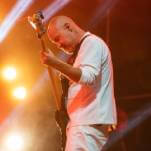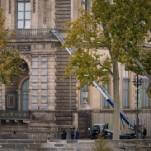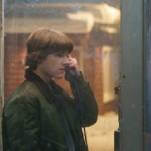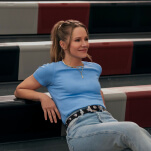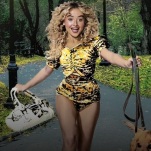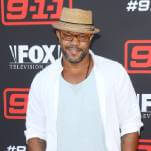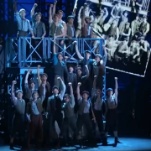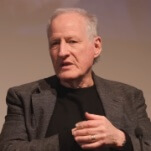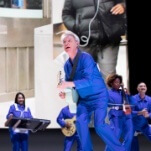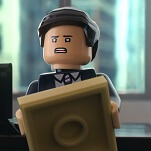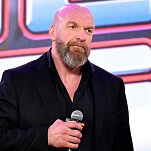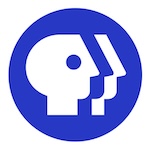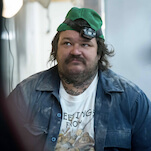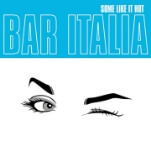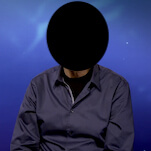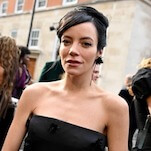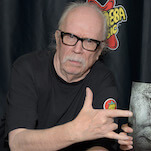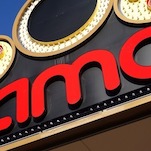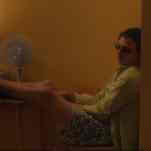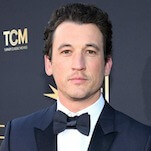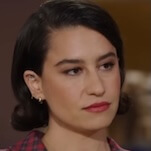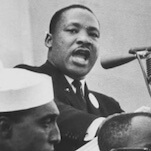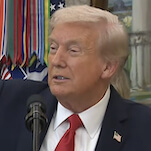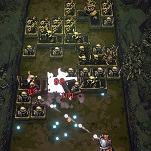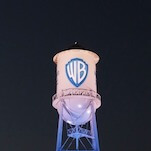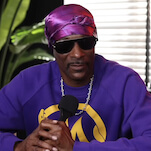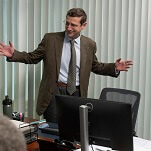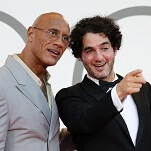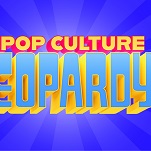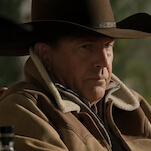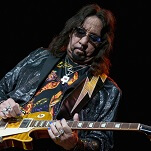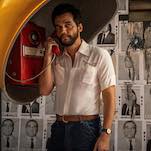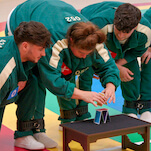Adapting an iconic superhero for the big screen usually means adapting at least one of their iconic love interests as well. Steve Trevor may not be a household name like Lois Lane or Mary Jane Watson, but like those characters, he’s been a staple of Wonder Woman’s story from her very first appearance in All-Star Comics #8. Steve’s plane crash landing on Paradise Island is a key part of Wonder Woman’s origin story, in much the same way Jor-El sending Kal off in a space bassinet is a key part of Superman’s. So it only makes sense that Steve would have a major role to play in the first-ever big screen take on Wonder Woman, where he’s winningly brought to life by Chris Pine. His is the latest in a long line of interpretations of Steve, whose role has been emphasized and de-emphasized over the decades, depending on which creator was handling which Wonder Woman property at the time. (Lyle Waggoner even managed to play both Steve Trevor and Steve Trevor’s son in the 1970s Lynda Carter TV show).
But Steve’s various shifts represent more than just your average character readjustments. As Comic Book Resources recently pointed out in its fascinating deep dive, Steve is often torn between fulfilling the more traditional, damsel-in-distress role so often expected of superhero love interests and acting as a dashing action hero in his own right. He’s a reminder that although female superheroes have been around since the 1940s, we’ve yet to establish a cultural vocabulary to discuss these powerful women like the one we have for powerful men. Case in point: I have to refer to Steve as a “damsel in distress.” We simply don’t have a term for the male equivalent.
The online condemnation of Whedon’s script was swift and (setting aside the fact that I would never want to be judged by my own first drafts) not entirely unwarranted, especially as it hailed from someone who frequently positions himself as a champion of feminism. Many also pointed to Whedon’s pages as proof of just how well Patty Jenkins’ film handles its love story. Jenkins’ film starts with Diana’s childhood on the all-female island paradise of Themyscira, only to introduce a more deferential Steve once we already have a sense of our central heroine. Many critics have gone so far as to argue that the way Wonder Woman handles Steve is an ideal template for future superhero films to follow with their own, mostly female love interests: Steve never overshadows Diana, but he’s given plenty of screen time to ensure he feels like a fully fleshed-out character in his own right, too.
But I would argue Jenkins’ film has its own share of Steve Trevor problems. They might not be as egregious as the ones in Whedon’s draft and, as our own Jesse Hassenger beautifully articulates, there’s certainly a lot to like about how Wonder Woman handles its central romance. Still, even though Steve never threatens to overshadow Diana, her relationship with him overshadows her relationships with just about every other character—and that’s disheartening. While a male hero like Spider-Man can be motivated by both his love for Mary Jane and the moral code imparted to him by his Uncle Ben, Diana isn’t granted those kinds of layered, complex emotional connections. In her final battle, she’s thinking of Steve and Steve alone—not, say, her beloved aunt and mentor whose untimely death has relatively little impact on her arc.
This isn’t an outright condemnation of Wonder Woman, which still gets a whole lot right about the character, both on an artistic level and a representational one. But it’s frustrating that Robin Wright’s General Antiope, widely hailed as one of Wonder Woman’s breakout characters, gets just six-and-a-half minutes of screen time in the whole film. It’s to Wright’s credit that she makes such a huge impact with so little, but it’s hard not to think about how much more she could’ve done if the film had only trimmed a few of its many, many Diana/Steve moments.
Indeed, some of our most interesting insights into Diana come from dynamics the film has trouble finding enough time to fully explore: her complex relationship with her stern mother Queen Hippolyta; her bemused confusion over the bumbling Etta Candy; her compassion for shellshocked Charlie; her empathy for Chief; her love of everyday human things; her aforementioned admiration for Antiope. All of that takes a backseat each time the film returns, like clockwork, to the Diana/Steve dynamic. If that sounds like an exaggeration, consider this: We get not one, but three separate, water-adjacent scenes establishing their awkward but flirty banter—one of which takes place almost immediately after Antiope dies.
As Valerie Complex and Robert Jones Jr. note in their discussion of the film, while Wonder Woman has been rightly lauded for the fact that Patty Jenkins is the first woman to helm a mainstream superhero film, it’s also important to note that the film was still written by men: Allan Heinberg is the credited screenwriter, while Zack Snyder and Jason Fuchs have story credits. But the question here isn’t whether men can write compelling women. Clearly Heinberg, Snyder, and Fuchs do just that in their pitch-perfect depiction of Diana, just as so many male writers have done for her over the years—dating back to her original creator, William Moulton Marston. The question is whether men can write other men who aren’t the stars of their own stories. It often feels like Heinberg et al. are fighting some knee-jerk desire to make Steve the co-lead of Wonder Woman, whether it’s to appeal to male viewers (a luxury female audiences seldom enjoy), or just because they innately identify with him, and therefore want to give him more to do. His individual scenes may be great, and Pine is good in them, but Steve’s inflated screen time ultimately hurts Wonder Woman every bit as as much as if the first Thor had increased Jane’s role at the cost of downplaying Loki and Odin.
That’s why I hope the Steve Trevor of Jenkins’ film doesn’t become the model for future superhero love interests—male or female. We don’t need better written superhero girlfriends (although ones that aren’t written atrociously would be nice). We need more female superheroes, and we need to get comfortable with the idea of letting male love interests take a backseat to their leading ladies. Part of this may come naturally by ensuring there are more women creating superhero blockbusters in the first place, which is why it’s exciting that Patty Jenkins is currently working on the script for Wonder Woman 2. By getting the men out of the way, here’s hoping we’ve yet to see the greatest heights of what Diana can achieve, with the help of a much broader superhero support system.
